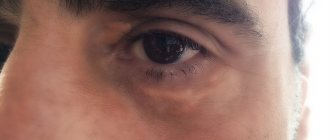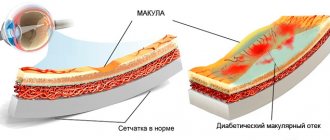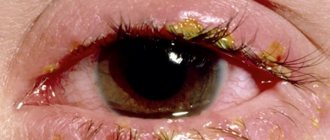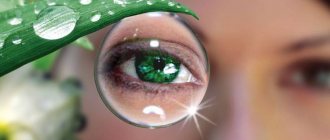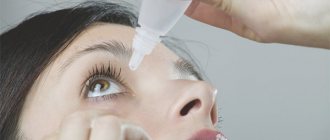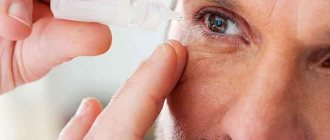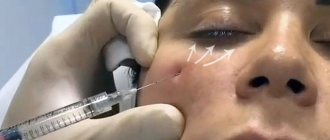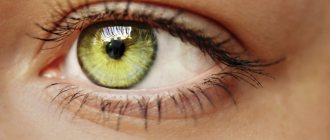Reasons for appearance
White spots under the eyes are a manifestation caused by clogging of the vellus hair follicle or sebaceous gland with keratin. It accumulates and thickens, forming whitish or yellowish lumps of a clear round shape, protruding from under the skin and hard to the touch. This problem is called milia, retention or miliary cysts or “prosyanka”.
The causes of milia are:
- lack of personal hygiene;
- use of low-quality or inappropriate care products;
- excessive use of decorative cosmetics;
- passion for chemical peeling;
- heredity;
- poor nutrition;
- burns, injuries and inflammation of the skin;
- puberty;
- oily facial skin;
- abuse of going to the solarium or exposure to the sun;
- smoking and frequent consumption of alcohol or carbonated drinks.
White pimples (milia, prosyanka) under the eyes, on the eyelid
White bumps or clear, whitish blisters can really be a cause for concern. After all, they are a sign of some disease.
Moreover, the pathology is determined by the location and appearance of the suddenly appearing bulge. Therefore, it is important to know exactly where the white pimple is located on the eye:
- in the inner part of the eyes;
- between and under eyelashes;
- on the upper or lower eyelid;
- along the edges of the two eyelids;
- on the underside of the eyelid.
Reasons for appearance
A painful stye appears on the eyelid for various reasons:
- hypothermia of the body;
- allergic reaction to low quality cosmetics;
- exacerbation of ophthalmoherpes;
- touching the eyelid with dirty fingers;
- getting a speck or dirty sliver into the eye;
- micro scratch.
An inflamed white or transparent bump on the eye may be a sign of a certain pathology:
- Milia on the eyelids are small white rashes that appear on both the upper and lower eyelids. They represent the accumulation of fatty secretions. They don't hurt and don't cause any discomfort. The discomfort from the appearance of millet (the second name for these pimples) is only aesthetic. On the eyelids they sometimes appear in a row of several pieces and resemble millet grains in appearance. Milia are a common type of lipoma, popularly called lipomas.
- Stye is a red pimple on the eyelid, usually on the lower, less often on the upper. This disease is characterized by acute inflammation. The purulent process rapidly develops in the hair follicle of the eyelash or the sebaceous gland; white pus is usually visible inside the inflamed red tubercle, most often located on the eyelash growth line. This is the head of barley. Inflammation causes swelling of the eyelid, itching, burning and tearing. Most often this is a symptom of blood poisoning and hypothermia.
- Meibomite is a pimple on the inside of the eyelid. This bump is similar to a stye, but causes severe pain, swelling, redness of the eyelid, and a sensation of a foreign object in the eye. It may be a symptom of a serious infection in the body or decreased immunity.
- Watery blisters may be a sign of an allergic reaction to eyeliner or mascara. Ophthalmoherpes also looks like.
What tests to take
The real cause of the appearance of inflamed formations or watery blisters is not easy to determine without medical education. It is recommended to consult an ophthalmologist. Especially if the eye is constantly itching, watery, or painful.
If an inflammatory process is detected:
- you should take a general blood test;
- blood for sugar;
- for HIV and syphilis;
- clarify hormonal balance;
- scraping of the dermis and purulent top, for the presence of microbes, viruses, fungi, parasites, eyelash mites;
- determination of endocrine disorders;
- digestive processes;
- reduced immunity;
- vitamin deficiency
Under no circumstances should you squeeze out a pimple on your eyelid yourself. It is important to first find out the cause of its occurrence by contacting an experienced specialist.
A red, painful bump in the corner of the eye or on the eyelash line often represents a purulent process. An attempt to release pus from it on your own can lead to an immediate spread of infection within the ocular system. The brain is also nearby, which is very dangerous.
The doctor will prescribe treatment, which may include:
- from eye drops with antibiotics, in case of severe inflammation;
- ointments for applying at night;
- antibacterial ointment for eyelids and face;
- treatment for eyelash mites;
- tablets orally when the process is very advanced.
Traditional methods
In folk medicine, millet is treated in different ways:
- Garlic. The crushed clove is mixed with sunflower oil and the juice from the pulp is applied to the eyelid. But it’s easy to replace garlic with an aloe leaf so that your eyes don’t burn.
- Aloe. The spines are cut off from a thoroughly washed leaf. The leaf is cut lengthwise in the middle, releasing the pulp. A fresh cut is applied for a few minutes three times a day to the sore spot. Aloe is excellent at drawing out pus. Barley with pus will become less inflamed and will gradually resolve.
All manipulations should be agreed with a doctor.
Meibomites treat:
- Warm herbal compresses.
- Plantain infusions.
- Calendula decoctions.
Possible diseases
White dots under the eyes are a rash that in itself is not a disease, but is often a sign of disorders in the body. If they occur, it is recommended to check the gastrointestinal tract, liver and gallbladder, pancreas, endocrine, cardiovascular, and autonomic nervous systems.
White nodules may indicate pregnancy, hormonal imbalance, allergic reactions, the onset of menopause, vitamin A deficiency in the body, hypo- or avitaminosis, or skin diseases (porphyria cutanea tarda, bullous pemphigoid, dystrophic form of epidermolysis bullosa, tuberculous lupus, skin sarcoidosis).
They also appear against the background of oily, thick seborrhea.
Causes
The main reason for the appearance of white circles not only under the eyes, but also on the body is vitiligo. This rare disease is characterized by the formation of areas on the skin lacking melanin (depigmented). Young women and men under the age of 20 are most often affected.
Causes of vitiligo:
- disturbances in the functioning of the endocrine system (thyroid gland, adrenal glands),
- mental trauma,
- heredity,
- vegetative-vascular disorders,
- stress,
- weakened immunity, lack of vitamins,
- intoxication of the body,
- worms.
The disease vitiligo is manifested by the formation of spots on the body and face in which the melanin pigment is completely absent. This occurs due to the destruction of colored cells - melanocytes, and the skin around the eyes is often affected.
The initial stage of the disease can be determined if small white spots begin to appear on the body. Over time, the spots increase in size, merging with each other, and entire white islands are formed on the skin. The disease can affect anyone, but more often it affects the younger generation and people over fifty. The disease worsens in the spring and especially when the skin is exposed to the scorching sun for a long time.
The treatment process for this disease is complex, this is due to the fact that until this time the exact reasons for its development are not known. The only thing that is known for certain is that the development of the disease is influenced by disturbances and malfunctions of the endocrine system, genetic predisposition, infectious processes, chemical poisoning, and stressful situations. The disease does not threaten a person with anything other than deterioration of the aesthetic appearance.
To date, it has not been clarified what the mechanism of action of vitiligo is. But doctors suggest that certain factors play a role. Thus, neuroendocrine disorders, dysfunction of the adrenal glands, thyroid gland, gonads, and pituitary gland have an impact.
Mental trauma, autoimmune processes, and disorders in the nervous and autonomic system contribute to the occurrence of vitiligo. In addition, hereditary predisposition to this disease should be taken into account, which is confirmed by the presence of family cases.
Stress, a number of chronic diseases, past infections, as well as skin contact with certain materials of synthetic origin play a significant role in the occurrence of white spots under the eyes caused by vitiligo. Many patients suffering from vitiligo have had physical injuries. In addition, it turned out that white spots of vitiligo occur when the balance of vitamins, the metabolism of iron, copper, zinc, and other elements is disturbed.
Experts attribute an equally important role in the occurrence of the disease to disturbances that occur in the functioning of the immune system. There is information about the autoimmune pathogenesis of the disease. In addition, skin discoloration in some cases is caused by helminths. When the normal functioning of the endocrine glands is disrupted, copper deficiency occurs in the body, and deworming carried out in this case helps to get rid of vitiligo.
Symptoms
How does it all start if you have vitiligo? This disease has a chronic course, and large white spots under the eyes and in other areas cause serious concern to the patient, primarily from an aesthetic point of view. This condition is depressing and causes significant discomfort. At first, such spots are very small, but later they acquire clear boundaries and increase in size.
White spots tend to merge, so large lesions often appear. In the area of the white spot, sweating is impaired; discolored skin may not respond to cold or other external influences. In addition, vitiligo is often accompanied by solar dermatitis.
Patients with vitiligo have no complaints about subjective sensations, and first of all, cosmetic defects are of concern. Sometimes some spots disappear spontaneously. Doctors recommend not to stay in the sun for a long time, because against the background of tanned skin, white spots under the eyes become most noticeable.
In the presence of white spots under the eyes, the diagnosis is made taking into account the clinical picture, and basically it does not raise doubts, this is explained by the characteristic clinical manifestation of the disease. Since there are many factors that provoke the development of vitiligo, there is a need for complex treatment. In dermatology, the treatment of this disease is considered difficult because there is no clear treatment regimen.
Treatment
During treatment, the doctor may prescribe medications that make the skin more sensitive to ultraviolet radiation, followed by irradiation. It is impossible to completely cure a patient if concomitant diseases are not eliminated, since vitiligo can be considered a kind of skin marker of internal diseases. Nowadays, a search is underway for methods that can effectively eliminate white spots caused by this disease.
If you notice signs of vitiligo, you should make an appointment with a dermatologist. You should know that when describing symptoms, you cannot focus only on problems with white spots under the eyes. Other signs that have no connection with the skin are also very important. Doctors emphasize that the reason often lies in internal changes. Although vitiligo is not a life-threatening disease, it is a signal of general problems in the body, which means that measures need to be taken.
But there are also optimistic facts regarding the treatment of vitiligo. For example, fresh spots can sometimes be treated with anti-inflammatory ointments, corticosteroid drugs are used. In addition, often the patient does not have vitiligo, but non-contagious lichen, which also causes white spots. And in this case, therapy with tablets and ointments is prescribed.
In addition, a white spot can occur after a burn, previously treated psoriasis, and even after a mosquito bite. Even a specialist finds it difficult to distinguish such lesions from vitiligo.
© 2015, I fly myself. All rights reserved.
yalechusama.ru
By the color of circles under the eyes, you can determine their main reason for their appearance. Therefore, it is necessary to know at least the most common factors. But, in any case, if you have even the slightest doubt about the origin of the bruises or are sure that they appeared due to problems with internal organs, then you should immediately consult a doctor.
Causes of blue circles under the eyes
Blue circles under the eyes have a lot of reasons for their appearance - from a lack of vitamins to more serious diseases.
One of the most common causes of blue spots under the eyes is too thin eyelid skin. In the area of the lower eyelids there are a large number of both blood and lymphatic vessels. When the vessels dilate, they become more visible, and if the skin is thin, then many vessels look like a blue bruise.
Vessels, in turn, can dilate for several reasons:
- circulatory disorders,
- heart dysfunction,
- kidney dysfunction,
- liver problems,
- problems with the thyroid gland.
Another common cause of blue circles under the eyes is iron deficiency or dehydration. First of all, this applies to women who abuse diets where dishes are prepared from a certain amount of food. A modest diet leads to a lack of various minerals and vitamins in the body. But it is iron deficiency that causes blue circles.
Gray circles under the eyes
Gray sunken circles under the eyes have several reasons for their appearance and are the result of a violation of lymph and venous blood. Most often, the main problem lies in overwork, lack of sleep, drinking alcohol or losing weight too quickly. Gray circles look very unhealthy and are extremely difficult to disguise, so when they appear, you should immediately pay attention to your lifestyle.
White circles under the eyes
There can only be one reason for the appearance of white circles under the eyes - vitiligo. This happens extremely rarely. Vitiligo is the loss of healthy pigment in certain areas. Most often this manifests itself as white spots on the lower eyelids. Green circles under the eyes may also appear, but this is even less common.
Green circles under the eyes
Green bruises can appear due to a very harmless reason - poor quality of the metal frames of the glasses. The frame is in direct contact with the skin, which can cause a chemical reaction - the release of a green coating that settles on the bridge of the nose and lower eyelids. Thus, the plaque looks like green circles under the eyes.
Brown circles under the eyes
There may be several reasons for the appearance of brown circles under the eyes:
- Metabolic disease. A brown tint to the skin around the eyelids may indicate liver or stomach problems.
- Prolonged stress. The influence of a stressful situation entails sleep disturbances and even changes in the hormonal levels of the body. The result is the appearance of dark circles under the eyes.
- Heredity. The tendency to pigmentation is often congenital. In this case, circles under the eyes are not the cause of any diseases or disorders, which means they will accompany you throughout your life. They can only be disguised with cosmetics or bleached regularly.
Red circles under the eyes
The cause of the appearance of red circles under the eyes can be both an allergic reaction and kidney problems. A bright red tint to the skin indicates poor kidney function, so you should immediately consult a doctor, as the disease can really be serious.
Also, lack of fresh air can cause red spots in the lower eyelids.
womanadvice.ru
Quite often, yellow circles do not indicate serious illnesses. For some people, due to their structural features, this shade of the skin around the eyes is normal. In other cases, non-disease related causes include:
- Oversaturation of the body with carotene. Sometimes excessive consumption of foods high in this microelement can cause various areas of the skin to turn yellow. Most often, the yellow pigment “settles” in the area around the eyes. This phenomenon can be observed after eating 2-2.5 kg of carotene-containing vegetables or fruits,
- Oxidative reactions. Yellow or yellow-green circles can occur due to elementary oxidation of the metal frame of glasses. Cleaning or replacing your frames will help restore your skin's natural color.
- Chronic fatigue. Regular lack of sleep, nocturnal lifestyle and frequent stress lead not only to the appearance of swelling and circles around the eyes, but also lead to exhaustion and earlier aging of the body. Try to reduce negative factors to a reasonable minimum, and your complexion will again become uniform and natural,
- Sensitivity to ultraviolet light. A certain number of people experience some yellowing of the eye area after prolonged exposure to direct sunlight. Try not to go out in the midday sun and use products with high UV protection.
Diagnostics
No special equipment, scrapings or tests are needed for diagnosis; a dermatologist-cosmetologist recognizes millet by its characteristic external signs when examining the skin. Single dots are a rare occurrence; more often they are located in clusters, covering the eyelids, temples, cheekbones and cheeks, nose, and occasionally appear on the body.
When pressed, they do not cause pain, do not itch and are not prone to inflammation if their integrity is not violated.
You need to make sure that the white lumps are milia, and not fibrofolliculomas (dome-shaped papules that do not differ in color from healthy skin or have a yellowish tint), lipomas (wen), trichodiscomas (a scattering of small whitish papules), comedones (plugs in the sebaceous glands ), syringomas (nodules formed as a result of impaired development of sweat glands).
Or xanthelasmas on the eyelids (benign tumors that are yellowish in color and soft to the touch). Only then will the treatment be correctly selected. In public clinics, consultation can be obtained free of charge; in private clinics, prices for an appointment start on average from 400 rubles.
Reasons for education
There are several common reasons why the sebaceous glands become clogged. As a result, those same white wen are formed under the eyes. These include:
- hereditary predisposition;
- poor metabolism;
- accumulation of too much subcutaneous fat;
- slagging of the body.
Until now, it has not been possible to establish the exact causes of the formation of these lipomas. Medical professionals do not have a clear answer to the question of why white wen forms around the eyes. At the same time, there are a number of factors that contribute to their appearance.
So, white wen under the eyes appears in people with diabetes, diseases of the genitourinary system and kidneys, hormonal imbalance, and those leading a sedentary lifestyle in the absence of physical activity, which contributes to the formation of congestion. Also at risk are those who often include unhealthy foods in their diet (spicy and fatty foods, smoked foods) and regularly overeat. All this results in the growth of the fat layer and disruption of normal metabolism.
Experts come to the conclusion that treatment of a wen on the eye must be carried out in a complex manner, affecting not only the lipoma itself, but also the reasons that led to its appearance.
When to see a doctor
White spots under the eyes are such an unpleasant phenomenon that tends to get worse if you don’t fight it. The millet does not cause any harm to health or life, but it can greatly spoil the appearance.
If the occurrence of retention cysts is caused by illness, you should not delay visiting a doctor; timely treatment will prevent further complications, and getting rid of the cosmetic defect will be cheaper. It is better to entrust treatment to a dermatologist or cosmetologist; independent removal can lead to serious consequences.
Only a dermatologist or cosmetologist can properly remove white spots under the eyes.
Rashes on the face of newborns are not uncommon; they usually go away on their own after 1-3 months and do not require intervention. In adults, cysts do not disappear without treatment, since they are not able to mature and spontaneously open.
Symptoms
In the early stages, pigmentation appears in the form of small spots of a light shade. The mechanism of occurrence of the pathological area is associated with the destruction of melanocytes. The area under the eyes is susceptible to vitiligo, as it is the most sensitive area.
At the initial stage of development, the disease is observed by the appearance of small white zones. As the disease progresses, the spots unite together, which externally forms large-scale affected areas. Patients are often diagnosed with a chronic form of the disease, but exacerbations of the pathology are possible in the spring and autumn. It is advisable to protect the affected areas from exposure to ultraviolet radiation.
Symptomatically, vitiligo is accompanied by:
- changeable pigmentation under the visual apparatus;
- redness in this area;
- intensive production of sebaceous secretions;
- peeling;
- areas with thickenings;
- discoloration of hairs on the skin;
- sweating disorders.
The patient's general condition remains normal. A patient with vitiligo experiences psycho-emotional discomfort in society.
Prevention
White spots under the eyes are a disorder of the body that is more susceptible to people with a genetic predisposition or oily skin. In these cases, the risk of cyst re-formation after removal is especially high.
However, no one is immune from this scourge, so even if there is no problem, you should follow the recommendations:
- Cleanse your face daily, choosing products based on your skin type. Scrub or exfoliate your skin 1-2 times a week. Sometimes wipe your face with a decoction of sage, chamomile, and string to refresh and disinfect.
- Reduce the consumption of salt, flour, sweet, smoked, fatty, spicy, fried foods, canned foods, carbonated drinks, avoid products with aromatic additives, dyes, and introduce fruits and vegetables into the daily menu.
- Limit exposure to the sun.
- Apply only high-quality decorative cosmetics, and be sure to wash them off before going to bed.
- Adopt a healthy lifestyle, stop smoking and do not abuse alcohol.
- If you have vitamin deficiency, do not neglect vitamin-mineral complexes. Vitamins A and E are especially important.
- Monitor your health and undergo regular examinations.
Don't miss the most popular article in the section: Face fitness for facelift, rejuvenation, muscle tone. Master class from Elena Karkukli
Treatment
The disease does not belong to dangerous diseases. The only inconvenience of vitiligo is the deterioration of the patient’s external characteristics. Therapy for white circles, regardless of the underlying causes, includes:
- local hormonal medications;
- drugs that stimulate the production of your own melanocytes;
- excimer beam;
- dermis whitening;
- replanting plots;
- narrow wave baths;
- PUVA therapy.
The duration of treatment for white circles is about 4 months. In complicated cases, therapy will take up to 1 year.
The treatment also includes the elimination of factors that provoke white spots:
- in case of helminthic infestation, it is necessary to take a course of anthelmintics;
- for autoimmune disorders, the use of drugs that simulate the body’s immune response is indicated;
- the appearance of pigmentation due to an infectious pathogen requires the use of antibacterial therapy;
- in case of general intoxication, elimination of exposure to chemical compounds is indicated;
- it is possible to eliminate intense friction by replacing synthetic fibers with natural fabrics;
- with increased psycho-emotional stress, the use of sedatives is necessary;
- hormonal imbalance will be restored by taking appropriate medications;
- If you have symptoms of vitamin deficiency, it is recommended to balance your diet and take a course of vitamins.
During the treatment period, the doctor will additionally recommend:
- means to improve liver functionality;
- vitamin and mineral complexes;
- diet;
- general detoxification of the body;
- complete exclusion of animal fats from the diet;
- avoid eating spicy, fried and sweet foods;
- eliminate allergic components in food;
- adhere to a healthy lifestyle.
Vitiligo is not life-threatening, but it does cause emotional discomfort. The effectiveness of therapy depends on the extent of the lesion and the suspected causes.
Treatment methods
In order not to harm yourself, you should contact a specialist with the problem. It’s not enough to get rid of white rashes; you need to follow your doctor’s instructions to avoid worsening or recurrence of the problem. Self-medication takes longer and does not always guarantee positive results.
Medications
All products are applied to cleansed skin. They help fight millet:
- Boric or salicylic alcohol (costs around 20 rubles) – they should be used to wipe each nodule point by point in the morning and evening. Healthy skin should not be touched to avoid drying it out. If an acid solution is used instead of alcohol, it should be 1% so as not to cause a burn. Noticeable improvements should appear within 10 days.
- Vishnevsky ointment (costs about 50 rubles) - squeeze a little onto a piece of cotton wool, apply to the affected area, secure with a band-aid and leave overnight. After several procedures, the “grains” should soften and can be gently squeezed out.
- Lipobase (260 rubles), Emolium (600), Retinoic ointment (300 rubles) - require spot application on the nodules themselves twice a day. Apply until the effect becomes obvious.
The duration of the course of treatment depends on the size of the rash; the more there are, the longer the recovery will take.
The advantage of folk remedies is their availability, among the disadvantages:
- Medicines are useless if milia are deep.
- The course of treatment can last several months, but does not guarantee the disappearance of all nodules.
- The products may cause irritation or an allergic reaction; in these cases, the drug should be stopped immediately.
After removing whiteheads, it is worth making masks from bodyaga; thanks to them, the wounds will heal faster and inflammation will go away. If the inflammatory process cannot be avoided, ichthyol compresses are used. Apply ichthyol ointment to a cotton pad, apply to the affected skin and secure with a band-aid. If possible, keep the compress for a day, renewing the medicine every 8-10 hours.
Improvements should be obvious after the first application.
Aspirin also has an anti-inflammatory, drying and healing effect. Crush 10 tablets, add 2-3 tbsp. warm water, stir. For better results, you can add a little liquid honey. Apply this paste to problem areas and leave for 5-10 minutes. Repeat 1, maximum 2 times a week.
https://youtu.be/u_m4PBt3ND4
Traditional methods
Medicines can be prepared with your own hands from natural raw materials. They should be used until the millet is completely eliminated. But you need to be prepared for the fact that the treatment will be long, it will take at least a month.
List of traditional methods:
- Lotion . Wash a few aloe leaves thoroughly, squeeze out the juice and mix it with 1 tbsp. alcohol Wipe the cysts with the resulting liquid before going to bed.
- Masks. When treating milia, daily use is recommended; as a preventive measure, once a week is sufficient. Viburnum: crush a handful of fresh berries with a wooden spoon, squeeze out the juice, add oatmeal, crushed with a blender, into it. Apply the paste to the white spots and leave for 45 minutes, then rinse with cool water. Cucumber. Remove the skin and seeds of one cucumber, finely chop or grate the pulp. Pour hot water, leave for at least 4 hours, wrapping the container for slow cooling. To apply the mask, you need to cut a mask from a small piece of linen or cotton with holes for the lips and eyes, moisten it in cucumber water and apply it to the face for 20-30 minutes. Paraffin. Melt the paraffin in a water bath, stirring, cool slightly, not allowing it to harden. Apply with a brush to milia and let dry, apply 2 more layers. After 20 min. remove carefully. Paraffin is contraindicated only for those who suffer from spider veins and overly sensitive skin. Milk-gelatin film mask: mix 1 tbsp. l. gelatin and milk, heat in the microwave until the gelatin dissolves, 10-15 seconds. Apply with a brush to problem areas. Wait until dry, remove. Wipe the skin with lotion. Spread half a peeled onion with honey and bake in the oven for half an hour at 100°C, crush. Apply the mixture to the affected areas in the mornings and evenings, leave for a quarter of an hour, rinse with warm water.
- Oil . Chop a small piece of propolis well and add sunflower oil. Leave for 3 days in a cool place. Treat whiteheads every morning. You can mix castor oil with tea tree oil. Treat the nodules with the mixture morning and evening.
- Scrub . Grind oatmeal with a blender, but not into flour, add 1 tsp honey to soften. baking soda and fine table salt. Apply with smooth movements along massage lines onto damp facial skin for 2 minutes. Rinse off with warm water.
- Soda peeling . Lather baby soap and apply to face. Pour baking soda onto a cotton pad. Massage your face with it for 3 minutes. Rinse off with cool water. Apply a light moisturizer.
Other methods
The most effective methods are those carried out by professionals in beauty salons.
| Way | Description of the procedure | Duration and frequency | Advantages and disadvantages | average cost |
| Electro-coagulation | Problem areas are excised with a metal loop of an electro-coagulator, heated under the influence of a constant high-frequency electric current. After the procedure, antiseptic treatment with a 5% potassium permanganate solution or chlorhexidine is required for 10 days. | Cysts can be removed in one session. This takes 10-15 minutes. | The method is famous for its simplicity, low traumatism due to point cauterization, and high efficiency. The pulses are able to penetrate into the deep layers of the skin. After the session, slight swelling and pain remain in the affected areas, which disappear after a few hours, and dense crusts appear, they disappear on their own. The main disadvantage of electro-coagulation is the likelihood of residual scars appearing. There are contraindications:
| From 70 rub. for one milium. |
| Laser | Exposure to a CO-2 (carbon dioxide) laser allows layer-by-layer clearing of rashes from any area of the face through thermal effects. Suitable for large areas affected by cysts, as well as when they are located too close to the eyes. | In one or two procedures, which last from 10 to 20 minutes, you can completely get rid of milia. | The method is painless and does not damage healthy skin. In addition to effective cleansing, it provides a bactericidal effect. After its use, there is no redness or suppuration. Laser coagulation has the highest cost among hardware methods. | From 100 rub. for each milia on the face and from 200 rubles. on centuries. |
| Mechanical cleaning | On steamed skin, the master removes millet stains using sterile instruments - a Vidal needle and a Uno spoon. | In one procedure, it is possible to remove only 10-15 milia, after which a break of several days is needed. Treatment may take a long period. | This is the most traumatic way. At the site of each removed formation, a small wound remains, which heals quickly. The advantage is the low cost of the procedure. Mechanical removal is not suitable for people with thin or overly sensitive skin and if white spots are located on the eyelids very close to the roots of the eyelashes. | From 50 rub. for one milium. |
If the milia are located close to the surface of the skin, a bath will help. The washed face should be thoroughly steamed and lightly patted with a birch or oak broom. After this, wipe your face and hands with alcohol and carefully squeeze out the blackheads. If the contents do not come out, there is no need to press harder; it is better to postpone the attempt until next time.
Don't miss the most popular article in the section: Facial massage according to the system of the Japanese doctor Asahi Zogan.
How to get rid
You can fight white spots around the eyes with homemade recipes or with the help of salon services. Getting rid of millet on your own by squeezing out the contents of the cutaneous tubercle is dangerous - there is a high risk of infection, a long-lasting pigment mark on the skin after removal.
Need advice from an experienced doctor?
Get a doctor's consultation online. Ask your question right now.
Ask a free question
The doctor carefully examines the formations, determines the degree of skin damage, the depth of the milia, the reasons why white dots begin to appear around the eyes, changes in the color or size of the grass, which can serve as a signal of diseases of the internal organs.
A specialist will help eliminate the rash, adjust your diet, and select care to prevent the recurrence of spots in the area around the eyes.
Mechanical method
A simple way to get rid of spots is to remove the white tubercles under the eyes with mechanical cleaning. It is important to follow the sequence of facial skin treatment and the rules for atraumatic removal of formations.
Step-by-step instructions:
- clean the skin with disinfectant solutions;
- apply steaming agents, cosmetic leavening agents to expand pores and facilitate access to points;
- the cosmetologist pierces the subcutaneous white tubercle under the eye with a needle, squeezes the contents of the capsule out;
- After removing pimples, the skin is treated with antiseptics, wound-healing masks, creams, and gels are applied to accelerate regeneration, prevent infection, and inflammatory reactions.
After the procedure, the doctor may recommend the use of drugs from the pharmacy based on salicylic acid, urea-containing solutions for treating the face to prevent the recurrence of white milia under the eyes.
Cosmetic removal
Professional methods of treating spots in the area under the eyes in a cosmetology office:
- Removal of white subcutaneous formations with a laser - high temperatures evaporate the contents. Laser coagulation eliminates superficial bleeding, is safe in childhood, and does not leave scars.
- Point exposure to electric current. The method is painless - needles or electric loops are applied to the grass, cauterizing the pimples.
Advantages of hardware methods for removing dots and white spots near the eyes:
- painlessness;
- healthy tissue is not affected;
- bactericidal effect of high temperatures;
- effectiveness of the procedure, protection against relapse.
Electrical loop removal and laser coagulation of white formations near the eyes are carried out in an equipped cosmetology office. Before the manipulation, the doctor cleanses the skin with points with an antiseptic solution.
After the procedure, dense crusts form that cannot be touched - they must peel off, otherwise a scar may form.
Possible complications
After eliminating a cosmetic defect, the skin needs restoration. After 4 days, it’s time to make this mask: mix 25 g of yeast with 1 tbsp. l. liquid natural honey, lemon juice and hydrogen peroxide (3%) until smooth. Keep the mask on your face for half an hour. Carry out the procedure twice a week.
If there are rashes around the eyes, you should not squeeze or pierce them at home, this is fraught with complications:
- Causing pain.
- Inflammation of wounds.
- After healing, scars will remain.
- Delicate skin is easily injured.
- Allergic reactions are possible when using traditional medicine without consulting a dermatologist.
Whiteheads are characterized by non-inflamed heads due to the fact that their contents are hidden under the skin and have no contact with the external environment. If left undisturbed, they rarely increase in size. If you puncture a miliary cyst yourself, there is a risk of introducing microorganisms into it, which will provoke inflammation with the appearance of an abscess. In this case, ointment with Erythromycin will help.
After mechanical removal, it is undesirable to use decorative cosmetics for 2-3 days.
Milia can appear at any age. White dots under the eyes are a nuisance that can affect self-esteem and cause complexes, so it is advisable to get rid of them in a timely manner. To avoid relapse, avoid stressful situations, monitor your appearance, nutrition and health.
Author: Liliya Razzhivina (Meerjungfrau)
Article design: Oleg Lozinsky
How is diagnosis carried out?
It is worth noting! The initial examination involves examining the patient's skin using an ultraviolet lamp.
In such conditions, vitiligo spots are seen better, and a specialist can also see pathological areas in which pigment disorders are not yet visible to the naked eye.
This allows us to predict the further development of the disease.
If the pathology develops atypically, skin samples may be taken (skin biopsy).
It is mandatory to donate blood and urine for analysis to identify lesions of the thyroid gland and problems with the immune system .
Patients are additionally referred for examination by an ophthalmologist and an ENT specialist .
With vitiligo, the melanin pigment also disappears from the surface of the retina and inner ear, where this substance is normally present in low concentrations.
Complete removal methods
Various methods are used to professionally cleanse the skin of milia in the eye area:
- mechanical removal;
- laser exposure;
- electrocoagulation.
Another way to get rid of millet is curettage. During the procedure, the specialist uses a special device called a cosmetic curette. Using this tool, seals are squeezed out and the existing capsule is scraped out.
Mechanical methods
When removing milia mechanically, they are opened and cleaned. Before starting the procedure, the skin must be well steamed and treated with an antiseptic. Next, the seal is pierced with a sterile needle, and its internal contents are squeezed out through the hole formed.
It takes several days for the site of exposure to heal, during which the patient must regularly carry out antiseptic treatment of the facial skin. This is necessary to prevent infectious processes.
The mechanical method of cleaning the face is considered simple and affordable, but has certain disadvantages. Most often it is used to remove single milia. After the procedure, there is a possibility of infection or relapse.
Laser removal
Laser exposure allows you to clear any areas of the epidermis from rashes. Unlike previous cosmetic techniques, this method helps to get rid of numerous milia.
The laser treatment method is painless and does not have a damaging effect on healthy skin. In addition to effective cleansing, this method provides a bactericidal effect and avoids purulent complications.
The main disadvantage of laser removal of white pimples on the face is the high cost of the procedure.
Electrocoagulation
During this procedure, a special device, an electrocoagulator, is used to get rid of white spots. The specialist applies high-frequency current to the skin. The method is recognized as uncomplicated, low-traumatic and highly effective.
Cauterization of rashes is carried out pointwise, thereby reducing the risk of damage to healthy skin tissue. Electrical impulses are able to penetrate into the deep layers of the epidermis and ensure the destruction of cavities that are difficult to reach for other cosmetic methods of facial cleansing. After the session, crusts form in the places where the milia were previously located, which fall off after a few days.
The main disadvantage of electrocoagulation is the likelihood of the formation of small residual scars.
